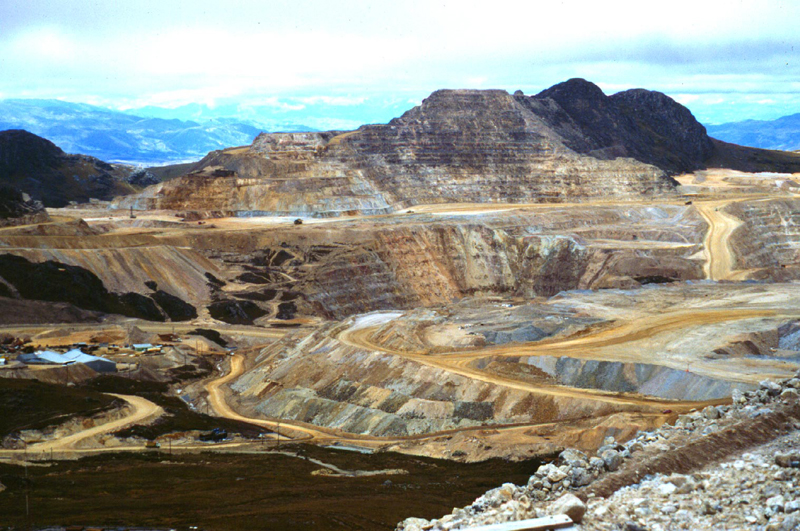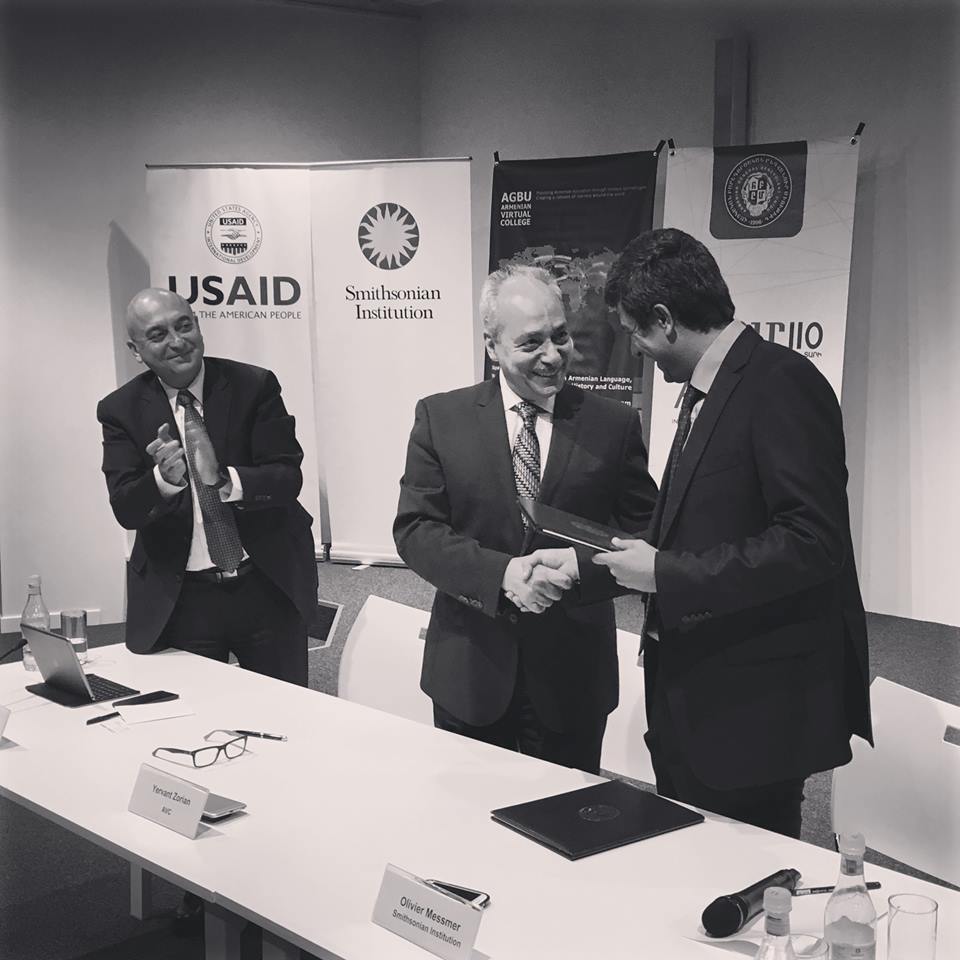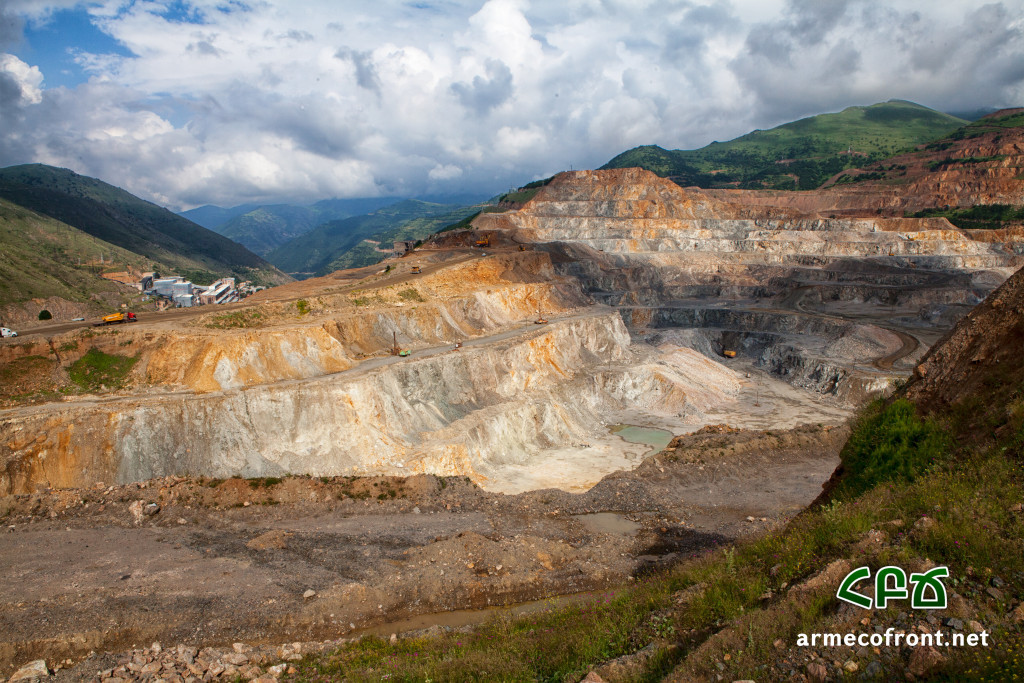Amulsar: Letter to the Board of Directors of the World Bank COO and VPs of the International Finance Corporation
In April 2014 and July 2014, residents of Gndevaz and Jermuk communities together with several environmental NGOs in Armenia submitted two complaints to CAO with regard to IFC’s investment in Lydian International Limited, a mining company sponsoring the exploration and planning exploitation of the Amulsar gold mining project. The complainants highlighted concerns about project impacts on the local water basins’ quality, risks with uranium deposits near the mining sight, red-listed species and a local tourism center. Other issues raised included criticisms of the Environmental Impact Assessment (EIA) conducted and alleged violations of IFC’s Performance Standards and national regulations.
IFC has been involved in Amulsar mining project since 2007; it is a 7.9% shareholder of Lydian International and has invested over 13 million USD in multiple stages. Meanwhile, Lydian International is an offshore based company, registered in Jersey, Channel Islands in 2006. The company has no mining experience whatsoever. It intends doing its first ever project in Amulsar, Armenia, which is situated in a geologically complicated area and therefore, is prone to substantial environmental and social risks. Since 2008, Lydian International is registered in Toronto Stock Exchange; however, this adds little transparency to Lydian with regard to revealing information about its shareholders, as the overwhelming majority of them are intermediary stock management companies and no information about the real shareholders is available. Nevertheless, a recent investigation discovered connections among several stakeholders in Amulsar project which involve corruption and money laundry risks. Amulsar gold mining project is only planned for 10 years and it will face serious opposition in case it starts. An ongoing petition with nearly 3500 signatures demands to stop financing the project.
The new Environmental and Social Impact Assessment (ESIA) was commissioned by Lydian Armenia (Geoteam) and approved by the Ministry of Nature Protection of Armenia in April 2016. Currently, representatives of Gndevaz village community and 2 environmental NGOs are disputing in the Administrative Court of Armenia the approval of the ESIA by the relevant ministries of Armenia; they state that the government has approved the mining project without carrying out due legal procedures and without due expert analyses of the documents presented by Lydian Armenia. At the most recent court hearing (March 16, 2017), the plaintiffs demanded that a new environmental and social impact assessment be carried out by independent experts. The stance of the Armenian government and Lydian Armenia on this issue announced on the next hearing on April 18, 2017. Meanwhile, information is published about how Armenian government accommodated the national legislation specifically to create more favourable conditions for gold mining in Amulsar breaching environmental standards and ignoring other more effective economic options for the development of the region: animation 1 and animation 2 present abstracts from an investigatory film on this issue.
Hereby, we would like to present to the IFC the most concerning unmanageable risks connected with gold mining in Amulsar and factors which may lead to the failure of the project. We urge that IFC refrais from any involvement in this project.
1. Affecting water resources and the risk of acid drainage
Amulsar is a sulphide mine (also stated in Geoteam’s early mineral exploration documents), therefore the water flowing through sulphide rocks will turn into reactive acid water creating acid drainage. The open mine area will be exposed to snow, rain and artificial watering, the streams originating in the open mine area will flow over the surface of the stripped area and downstream the mountain and will penetrate deep into the ground. Amulsar mountain is formed of cracked volcanic rocks and there is no method or technology to stop the water from penetrating into these rocks and thus flowing further into the ground. The latter will not only erode the iron concrete construction of the Vorotan-Arpa water tunnel that is located in the immediate vicinity of the planned mining area, but will also infiltrate into the water flowing through the tunnel into Lake Sevan and will ultimately alter the lake’s chemical composition. Lake Sevan is a unique large fresh water reservoir and a strategic water resource from the entire region of South Caucasus. This risk is also confirmed by a fact that not far from the mining site, right on Amulsar’s slope there is a small natural pond of diluted acid.
Another risk for water resources is associated with Jermuk, a health resort town famous for its healing mineral waters, only 12 km away from the mine and not even included in the ESIA until 2016. Lydian excludes any negative impact of the mining activities on the mineral waters and insists that an isotope analysis confirmed that these waters have no physical connection to Amulsar’s hydrological systems. However, scientific data (source: Geomorphology of Armenian SSR, 1986, pp. 134-145) (source 1, source 2) states the opposite: in relatively recent geological past, this area was the paleochannel of the Arpa-Vorotan river basin. Vorotan river has been connected to the Arpa river basin, they were one river (upper pliocene-lower quaternary geological period). Vorotan river’s upper basin and Arpa river were separated after Amulsar’s lateral raise. This means that deep mineral and underground waters are still connected.
The ESIA has numerous other gaps regarding the assessment of impact on water resources. These gaps are mentioned in detail in the petition of 8 environmental NGOs to the government of Armenia, dated March 10, 2017 (available only in Armenian yet). The NGOs and their experts exposed a number of methodological errors in the ESIA, contradictory facts presented in different documents of Lydian and a lack of grounded expert assessment which should prevent such a project from being carried out.
2. Heap leaching with sodium cyanide
The usage of sodium cyanide for heap leaching (1000 tons annually) contains primary and secondary risks, which are often unmanageable and uncontrollable. Primary risks include fires in cyanide storehouses, accidents in technical structures, leaks of highly hazardous substances, natural disasters, terrorist and military actions, and other similar accidents with grave effects on people, as well as nature.
Secondary risks have even more complex origins and their impacts may last forever. Ore containing gold and silver is crushed as a result of which all elements (or metal and non metal compounds) in the ore are separated. This substance is processed with water and cyanide mixture, and as a result of chemical reaction the gold is separated. However the reaction takes place not only between cyanide and gold but also between cyanide and other elements in the ore, including heavy metals, as a result of which nitrates and other chemical compounds are formed. There are many more heavy metals in the ore in Amulsar than gold, including cobalt, copper, iron, nickel, mercury, zinc, wolfram, bismuth, chromium, lead, as well as poisonous substances such as arsenic, selenium, tellurium, beryllium, cadmium, which will seriously pollute and threaten nature, ecosystem and humans health if they remain in the waste.
Risks of pollution cannot be ignored in the case of Amulsar, because its territory is located in a seismic area, in a tectonically active and landslide zone. Even a few millimeters of ground movement annually will be enough to destabilize the protective layers and structures and to cause an ecological disaster in Vayots Dzor region. Similarly, risk exists in case of technical problems and leaks that may also occur in the heap leach facility that will be located on the shores of Arpa river and some 1000 meters away from Gndevaz village (case of Bellavista mine is well known for us to understand the risks). From year 5 of the project activity, Lydian plans to extract the remains of cyanide from the heap-leach water and release it to Arpa river; the same solution is planned in case of technical accidents. The company hides information about the fact that this water will contain not only cyanide but also a large number of heavy metals (see more details in the next point).
Another risk related to this topic is that sodium cyanide will be transported to the mining site by road (there is no railway there) which means that dozens of towns and villages on the way to Amulsar will be at risk in case of any accidents of leak of cyanide during its transportation to the mining site. Note, the cyanide route, transportation and handling have not been part of ESIA and have not been duly examined and approved.
3. Communities downstream Arpa river
The mining project contains risks towards communities living downstream Arpa river. According to the ESIA of Lydian Armenia, these communities are not even considered to be affected communities. However, as the mining project states, the company will collect all the industrial waters for 5 years, afterwards, they will carry out a cyanide treatment and release the water to Arpa river. While cyanide can indeed be neutralised in water, other heavy metals will remain. What is going to happen to arsenium, zinc, and other metals available in the industrial waters? The project lacks any mention of treatment for heavy metals before releasing the water to Arpa river. Meanwhile, Arpa is the main source of irrigation water for at least 5 large villages which are among largest agricultural and wine producers in the country, and some local producers have even certified their products as organic. These people have not at all been informed about the grave risks to which they will be exposed in case mining in Amulsar happens. Risks of contamination of Arpa river and therefore, also massive agricultural lands are ignored in the ESIA.
4. A risk for World Bank funded projects in Armenia
The gold mining project in Amulsar contradicts other investments and projects of the World Bank in the same area in Armenia. The first one is Community Agricultural Resource Management and Competitiveness (CARMAC) Project for Armenia: The CARMAC project is designed to improve productivity and sustainability of pasture based livestock farms in 55 mountainous communities by increasing milk production, improving pasture management, and enhancing farm sales of livestock products. For example, this project includes Gorayk community which is now known for its best pastures in Armenia and is listed in CARMAC communities, but it is also one of the communities directly affected by Amulsar gold mining. The second contradiction is with the South Corridor Tourism Development Strategy which involves Jermuk as one of the main strategic places for tourism development but which will be affected by mining in Amulsar. Given the number of unmanageable risks mentioned above, mining in Amulsar will be incompatible with tourism or agriculture; these risks have not been duly assessed and, as referred in point 1 above, independent experts have revealed a number of methodological errors in the ESIA.
5. Active opposition and protests
The environmental community in Armenia and beyond, as well as local communities are actively opposing to the project. As soon as information about exploration in Amulsar became public, there has always been opposition towards this project in Armenia. The local communities were totally against the mine which was clear from the public hearings (more public hearing), from protest actions and refusal to sell lands for years (the state eventually declared eminent domain over those lands, who were not selling them). Independent experts and even the state expert committee on Lake Sevan have given negative opinions about mining in this area. Since 2011-2012, there have been numerous protest actions in Yerevan and Jermuk, discussion, critical articles, petitions, court appeals (in Armenia and Aarhus committee).
The opposition is becoming even more vocal and organised now. In the recent 6 months the issue has again raised high on the public agenda. In November 2016, after a local bank (Ameriabank) announced about giving a loan for Amulsar project their online public rating in the social networks dropped from nearly 5 star to 2.2 with hundreds of comments stating public discontent about this decision. There was a protest action in front of the bank headquarters, and dozens of individuals closed their accounts in Ameriabank as a sign of protest.
Another protest action took place at the 30th anniversary reception of the Ministry of Nature Protection of Armenia in December 2016; environmentalists disrupted the gathering with a speech and gifted the Minister mine-contaminated water.
In March 2017, the environmental activists disrupted the presentation of EBRD, EU and Swedish Government joint project titled “Business woman” exposing how Amulsar mining (also supported by EBRD) is going to affect the demography in Jermuk town, depriving women of their sustainable jobs in tourism and health resorts and increasing the risk of sexual violence and sexually transmitted diseases as hundreds of male mine workers will move to the town (ESIA, 2016, chapter 6.12, chapter 6.18). After this intervention social media ratings of EBRD too dropped and received dozens of critical comments and questions; 2 days later EBRD removed the review/rating bar to hide the criticism.
In March, residents of Gndevaz physically stopped Lydian Armenia from starting explosions at the village where heap leaching facility is planned to be constructed; a couple of days later, they blocked the road and stopped the cars of the Prime Minister of Armenia who was visiting the region for his electoral campaign and expressed their concerns and discontent about Amulsar gold project; as a result, the prime minister proposed that Lydian Armenia organizes a meeting in the village on March 16 (which is now postponed till April 6, after the elections) with the participation of experts from the government in order to address the questions of the local residents.
Moreover, during the past 6 months numerous articles, expert opinions and investigations have been published in Armenian and foreign media revealing dangers and corruption with regard to Amulsar gold project.
Considering these, as well as previously mentioned concerns, we urge IFC to withdraw from Amulsar project and stop supporting it in any way.
Armenian Environmental Front (AEF) civil initiative
Email: armecofront@gmail.com
1․ Mining Watch Canada
2․ Greens Union of Armenia
3․ EcoLur Informational NGO
4․ “Ecological Academy” NGO
5․ “Jermuk Development Center” NGO
6. “Environmental Public Society” NGO







